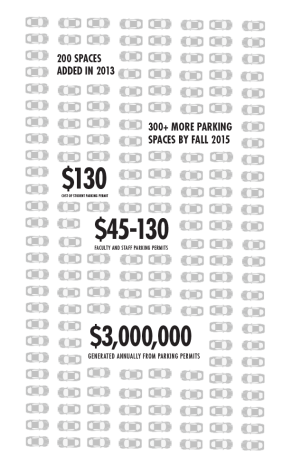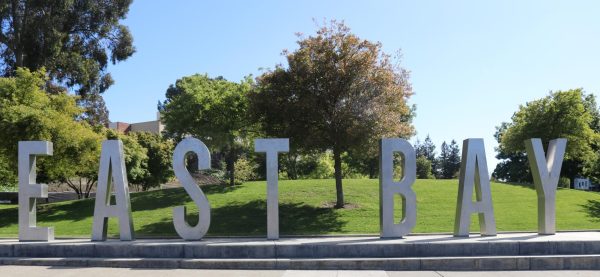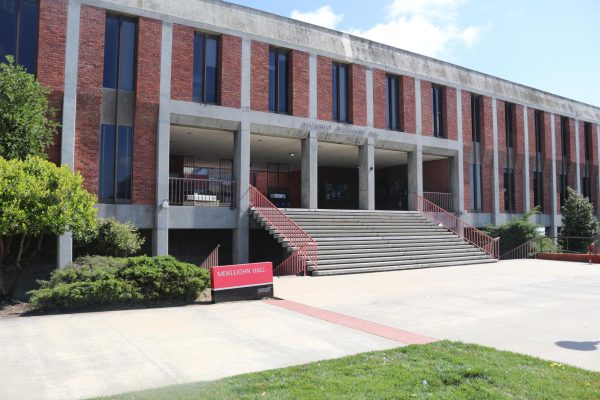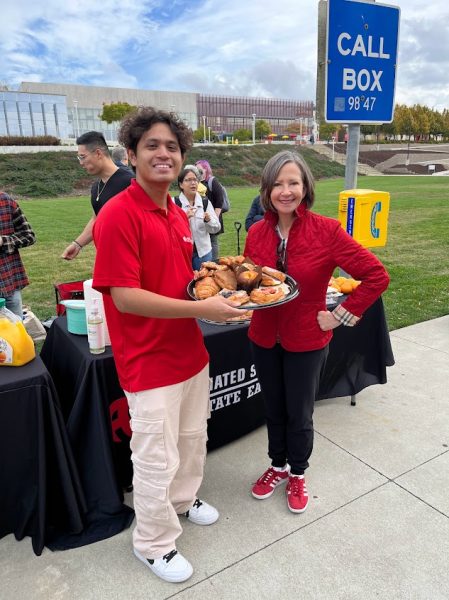Cal State East Bay promises more campus parking
April 8, 2015
Campus Parking Enforcement plans to create more than 300 additional parking spaces by Fall 2015 to serve the predominantly commuter student body of California State University, East Bay.
The grounds where Warren Hall stood will be flattened and converted to parking spaces, according to Parking & Transportaion Services manager Derrick Lobo. As many as 400 spaces will be split between two lots, for staff and general student parking.
In 2011 the university reported a total of 4,552 parking spaces and 13,160 students. Parking Enforcement added 200 spaces in 2013, when the student body rose to 14,823. Parking officials have not yet released this year’s parking statistics.
 Construction crews are currently occupying roughly 100 spots next to the Student Services Building forcing staff to take some general parking spaces.
Construction crews are currently occupying roughly 100 spots next to the Student Services Building forcing staff to take some general parking spaces.
The first week of every quarter parking enforcement gives a grace period to general student lots, so students have time to get a permit and not worry about getting a ticket. That grace period leads to more spaces being taken in the first week. Staff parking lots are still enforced during the first week.
After the first week students drop classes, attend less frequently, or find alternative routes to campus to avoid paying for permits. Despite the decrease in traffic flow students complain over the lack of spaces on campus. Even with the overflow lot, students struggle to find a space in time to make it to class.
According to Lobo, parking lots may look busy and may seem short in supply but that’s due to the overlap in class times for students. He recommends students arrive to campus on a certain schedule to avoid problems.
“On Monday, Wednesday, and Friday the best time to show up is 30 minutes before class because most are only an hour long so the turnover for spaces is way faster,” Lobo said.
On Tuesday and Thursdays, classes tend to run for almost 2 hours. Students who try to arrive an hour beforehand have to wait longer due to classes still being in session and fewer students leaving frequently during that time.
Lobo recommends students use lots L and P by the Carlos Bee loop. The lots contain roughly 300 spaces and students can walk to most locations on campus in 10 minutes from those lots.
Students with valid permits are also allowed to park at University Village right across from Carlos Bee Drive. From there, students can take the Castro Valley shuttle to the RAW center, or rent a Zagster bike. The bike service is a collaboration that is paid for by Parking & Transporation Services and the RAW.
Parking permits, which cost $130 for students and between $45-130 for faculty and staff, in addition to parking tickets, generate an estimated $3 million per year, Lobo explained.
Parking permit funds go toward employee salaries, campus shuttles, new lot constructions and lot infrastructure, Lobo said.
The long awaited plan for the parking garage now awaits approval from the state Superior Court to move forward, according to Lobo.
A portion of transportation funds also help subsidize the cost of the University Shutle Service on campus. The shuttle services costs around $900,000 for the year, funded partially by Alameda County Transport Commission regal grants.
From the grants, CSUEB received $95,000 this year, down from the $148,000 received in 2011. Transportation usage, or lack of, during peak hours largely determines the funds received each year, Lobo said.
All staff, including University President Leroy Morishita and the Board of Directors, purchase parking permits.
The Accessibility office can provide fee waivers for individuals who have DMV issued disability placards or on a case-by-case basis for those reported by financial aid as eligible based on their personal income.















